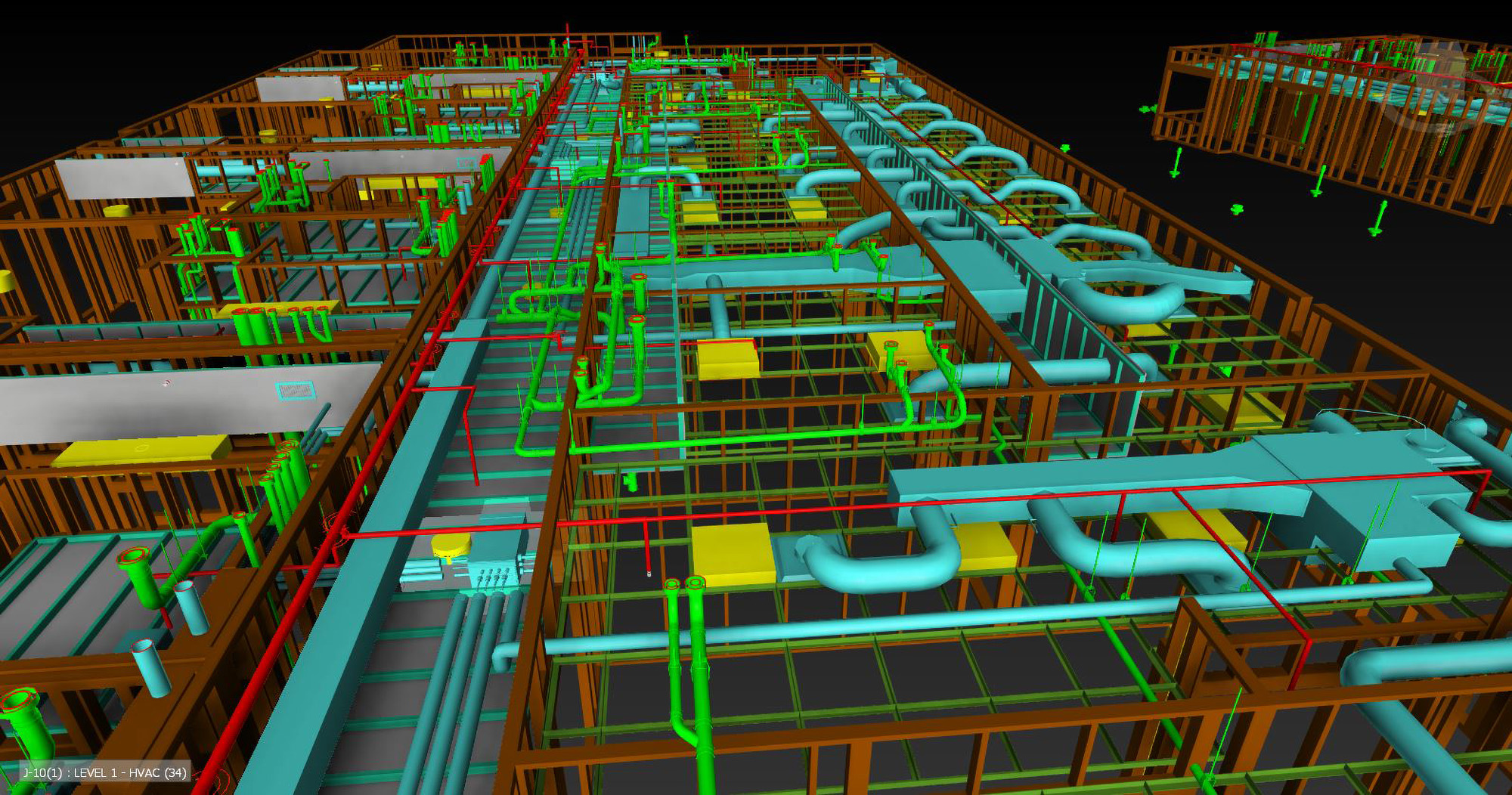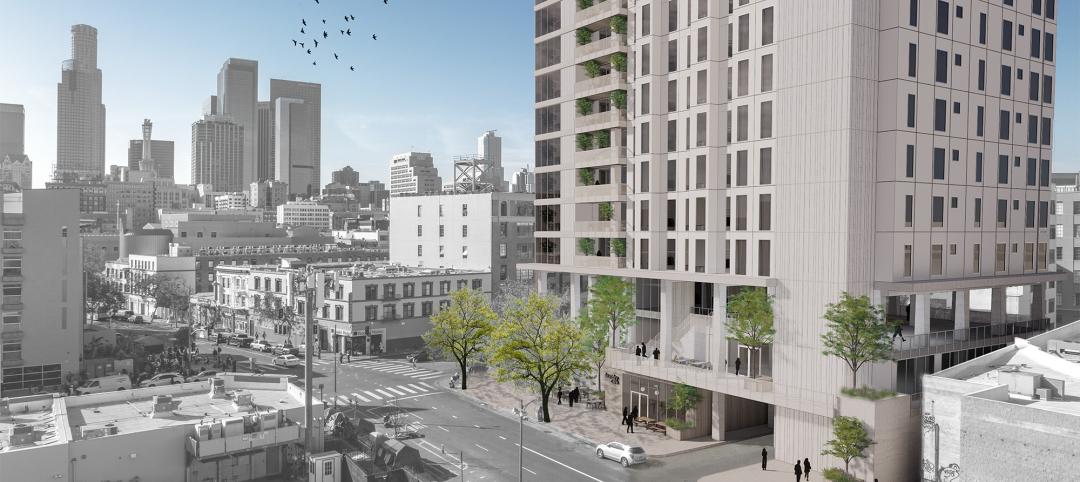Even with recent and growing public support for critically necessary affordable housing in California, developers are finding it difficult to make these projects pencil. They are forced to contend with myriad challenges, from supply chain and labor issues to complex financing and regulatory requirements, that must be handled well before building can actually begin.
It’s no secret that general contractors (GCs) can have tremendous influence over a project’s success in terms of schedule, budget, and overall quality. However, to ensure a project is put on this path, there are a few factors that must be considered. The keys are early involvement, open communication, and an experienced team that understands the intricacies of the affordable housing market.
Early Collaboration with General Contractors
First and foremost, project delivery type matters. Utilizing design-build or design-assist will allow the contractor to be involved in the project from the earliest phase. Bringing the general contractor into the conversation at this juncture provides them with an opportunity to make critical recommendations up front, positively affecting both budget and schedule.
Review the Three S’s: Structure, Systems, and Skin
Once the delivery method is selected and assuming it allows for early collaboration, the GC can carefully review design concepts, focusing on proposed structure type, building systems and exterior skin.
Through detailed and holistic evaluation of a project’s distinct goals and characteristics, the GC will know what enhancements should be made. For instance, they may identify structural solutions that are more readily available or ideally suited to the project. Recommendations might include cold formed steel instead of wood frame or mass timber in place rather than concrete.
Additional considerations include combustible versus noncombustible materials or potential hybrid scenarios. When it comes to the building skin, a GC can evaluate various finish options and assemblies to create the most cost-effective, long-lasting solution. Additionally, they might assess the size, number and style of windows to ensure the right balance of cost and design.
It’s important to note that exterior features, like balconies and sunshades, benefit greatly from early constructability and cost feedback, so these are vital to the overall decision-making process.
Utilizing Virtual Design+Construction
Such early involvement enables the general contractor to leverage its team’s range of in-house expertise to the benefit of the project. Mechanical, electrical, and plumbing (MEP) specialists can ensure systems are designed thoughtfully, while taking the building’s life cycle into account. Additionally, virtual design and construction (VD+C) and prefabrication expertise can greatly consolidate onsite construction time and duration, as well as labor needs, ultimately saving money.
Many building components, including walls, floor systems, roof structures, and electrical systems can be fabricated off site and then assembled onsite. Utilizing VD+C allows the team to meticulously lay out components and systems before construction begins, greatly increasing quality assurance and efficiency. For instance, once the design is coordinated through building information modeling (BIM) software, data can be extracted and robotic layout utilized to transfer critical horizontal and vertical control information within a tenth of the time it takes to use traditional measure-and-mark techniques, and with a higher degree of accuracy.

Alternatively, when the contractor is brought in later, as the project is ready to go to permitting, any opportunity for early collaboration and subsequent ability to make substantial design enhancements is lost. The GC can only price out the project and utilize bidding at this point, which can be limiting and affected by potential labor and/or supply chain shortages.
Consider Supply Chain Delays
While the Coronavirus pandemic appears to be in the rearview, the industry is still grappling with supply chain issues. In particular, many critical electrical components are delayed, with some requiring more than 80 weeks lead time. This necessitates that orders must be placed much earlier than would have been typical just a few years ago to avoid project delays, and in turn cost increases. Such consequences can be averted entirely when the contractor is able to collaborate on the project from the beginning.
Experienced Partners in Affordable Housing
Building an affordable housing project requires deep knowledge in areas one might not typically consider “construction.” Thus, it’s important that the GC team you select is experienced, well-informed in areas including financing and regulatory requirements, and maintains good relationships with the various trade partners required to get these projects off the ground.
Financing and Compliance
In California, almost all affordable housing development deals follow the same timeline with the California Tax Credit Allocation Committee (CTCAC) administering the state’s Low-Income Housing Tax Credit Program. GCs need to be intimately familiar with this financing mechanism, as it firmly dictates necessary compliance requirements. Navigating the multiple agencies involved and various types of documentation is a skill in and of itself, that again, must happen at the front end of the project.

Insurance
Current pressures in the property insurance marketplace have had a major effect on multifamily development. For example, both property and builder’s risk insurances can vary wildly when comparing combustible versus noncombustible construction types. Contractors should have a keen pulse on the market so they can make informed—and early—recommendations on a building’s materials. This is important both during construction, when the project is most high-risk and insured under builder’s risk, as well as in terms of building life cycle costs.
Regulatory
Frequent new regulations and updated code requirements can greatly impact how a project must be built, potentially adding scope and budget if not planned accurately. From identifying necessary sustainability features to meeting labor mandates, contractors need to stay informed and have a deep understanding of what is required before actually embarking on a project.
Labor Market
Ask any contractor about issues the industry is facing and shortage of labor is sure to be high on their list. This general sentiment is underscored in the affordable housing market developments that utilize low-income tax credits as part of the capital structure, as well as by the fact that each project follows the same CTCAT award rounds. This puts many projects on the same timeline each year and greatly limits labor competition, forcing subcontractors to pick and choose which projects they pursue.
Those general contractors that invest in building deep relationships with their local trade contractor partners will set themselves apart. Providing training and making sure these partners feel heard and seen can go a long way in ensuring a talented and reliable trade pool will choose to work on your projects when the time comes.
Overall, affordable housing projects are major investments with long timelines that ultimately have a remarkable impact on their communities. To be successful, developers need to assemble a qualified, collaborative team of professionals as early as possible. Doing so will surely result in providing quality homes to residents in-need quickly and efficiently.
Related Stories
Affordable Housing | Jul 27, 2023
Houston to soon have 50 new residential units for youth leaving foster care
Houston will soon have 50 new residential units for youth leaving the foster care system and entering adulthood. The Houston Alumni and Youth (HAY) Center has broken ground on its 59,000-sf campus, with completion expected by July 2024. The HAY Center is a nonprofit program of Harris County Resources for Children and Adults and for foster youth ages 14-25 transitioning to adulthood in the Houston community.
Affordable Housing | Jul 27, 2023
Repeatable, supportive housing for the unhoused
KTGY’s R+D concept, The Essential, rethinks supportive housing to support the individual and community with a standardized and easily repeatable design.
Adaptive Reuse | Jul 27, 2023
Number of U.S. adaptive reuse projects jumps to 122,000 from 77,000
The number of adaptive reuse projects in the pipeline grew to a record 122,000 in 2023 from 77,000 registered last year, according to RentCafe’s annual Adaptive Reuse Report. Of the 122,000 apartments currently undergoing conversion, 45,000 are the result of office repurposing, representing 37% of the total, followed by hotels (23% of future projects).
Multifamily Housing | Jul 25, 2023
San Francisco seeks proposals for adaptive reuse of underutilized downtown office buildings
The City of San Francisco released a Request For Interest to identify office building conversions that city officials could help expedite with zoning changes, regulatory measures, and financial incentives.
Multifamily Housing | Jul 13, 2023
Walkable neighborhoods encourage stronger sense of community
Adults who live in walkable neighborhoods are more likely to interact with their neighbors and have a stronger sense of community than people who live in car-dependent communities, according to a report by the Herbert Wertheim School of Public Health and Human Longevity Science at University of California San Diego.
Affordable Housing | Jul 12, 2023
Navigating homelessness with modular building solutions
San Francisco-based architect Chuck Bloszies, FAIA, SE, LEED AP, discusses his firm's designs for Navigation Centers, temporary housing for the homeless in northern California.
Multifamily Housing | Jul 11, 2023
Converting downtown office into multifamily residential: Let’s stop and think about this
Is the office-to-residential conversion really what’s best for our downtowns from a cultural, urban, economic perspective? Or is this silver bullet really a poison pill?
Adaptive Reuse | Jul 10, 2023
California updates building code for adaptive reuse of office, retail structures for housing
The California Building Standards Commission recently voted to make it easier to convert commercial properties to residential use. The commission adopted provisions of the International Existing Building Code (IEBC) that allow developers more flexibility for adaptive reuse of retail and office structures.
Multifamily Housing | Jun 29, 2023
5 ways to rethink the future of multifamily development and design
The Gensler Research Institute’s investigation into the residential experience indicates a need for fresh perspectives on residential design and development, challenging norms, and raising the bar.
Affordable Housing | Jun 27, 2023
Racial bias concerns prompt lawmakers to ask HUD to ban biometric surveillance, including facial recognition
Two members of the U.S. House of Representative have asked the Department of Housing and Urban Development to end the use of biometric technology, including facial recognition, for surveillance purposes in public housing.


















